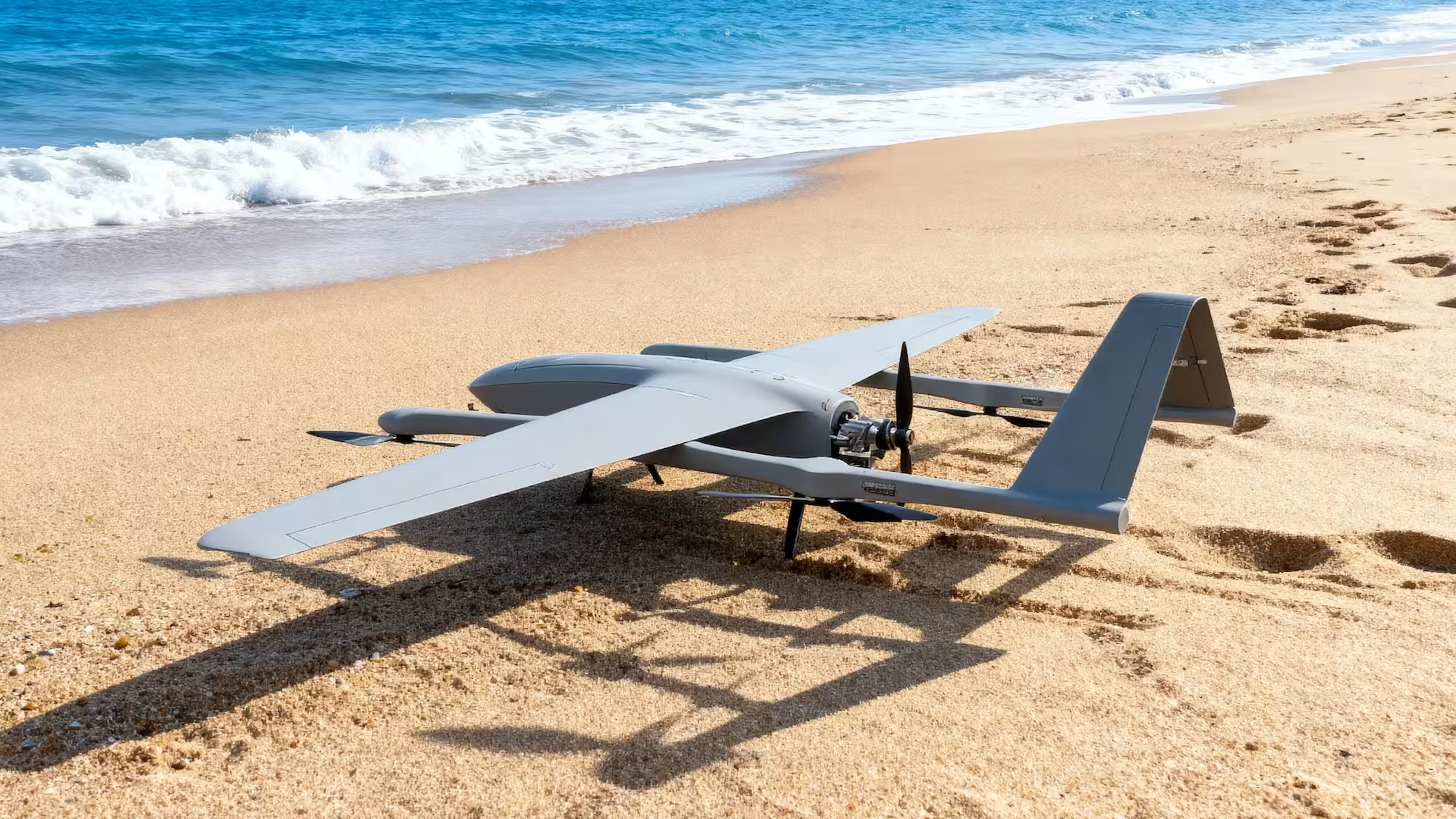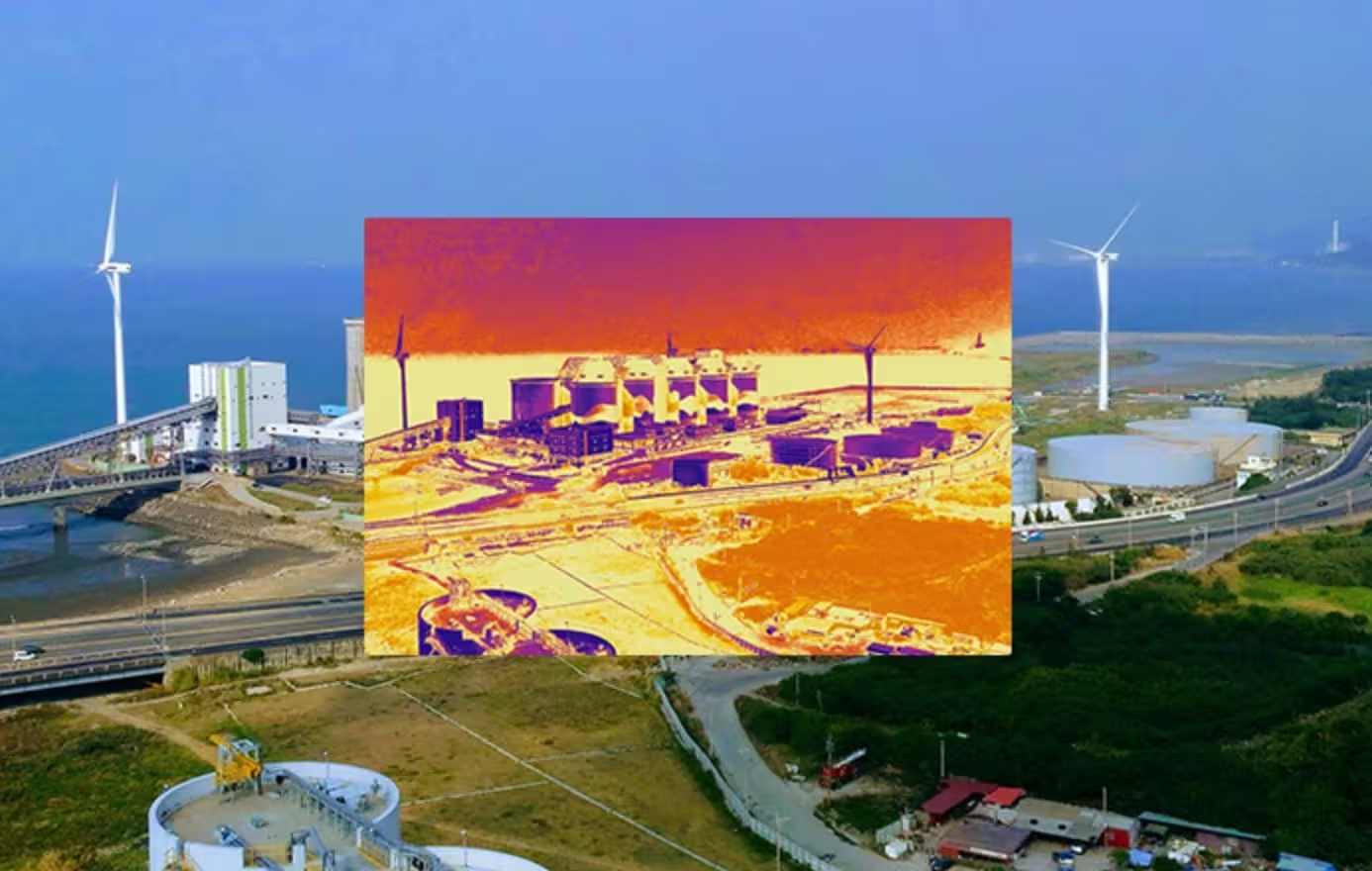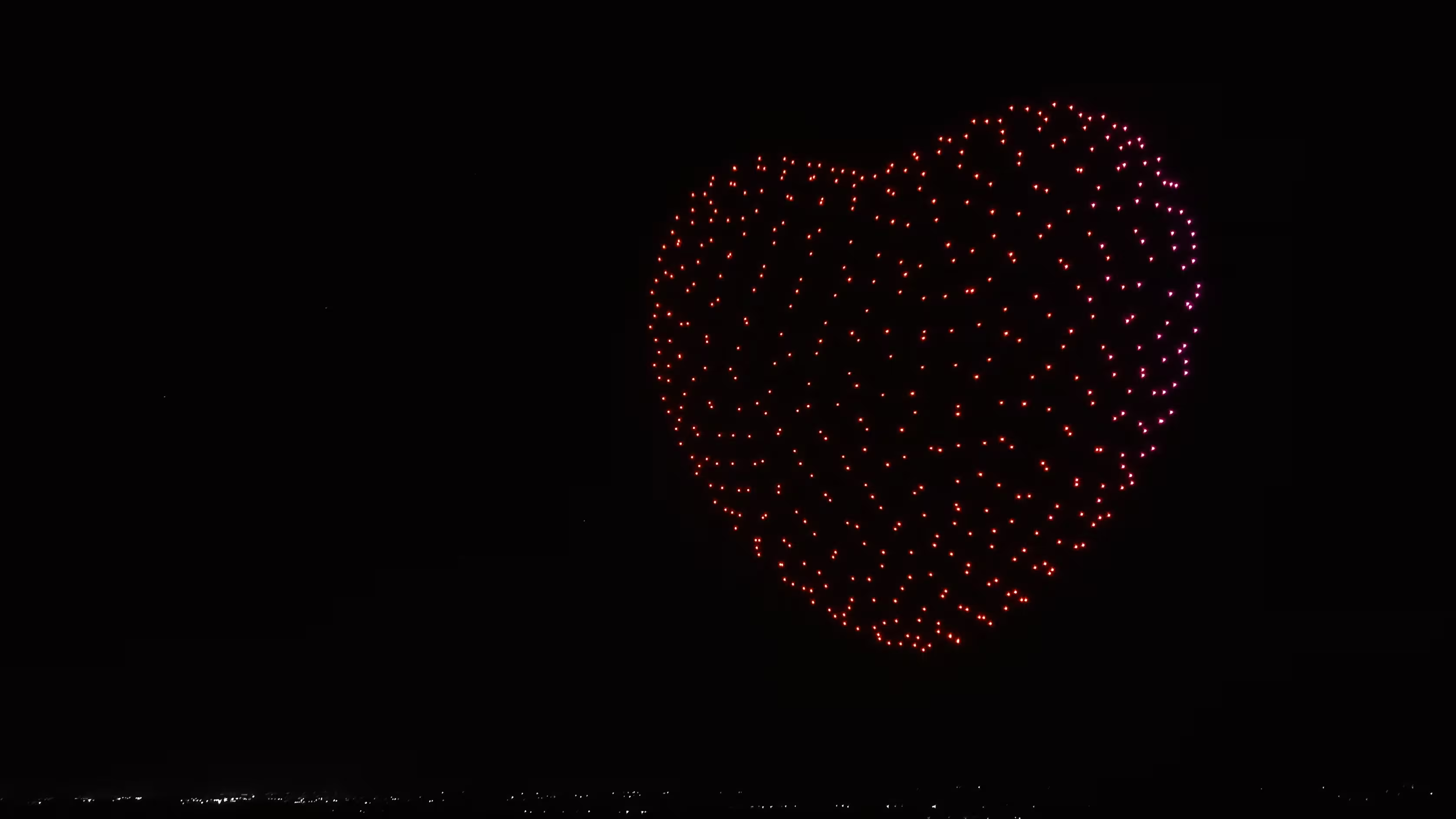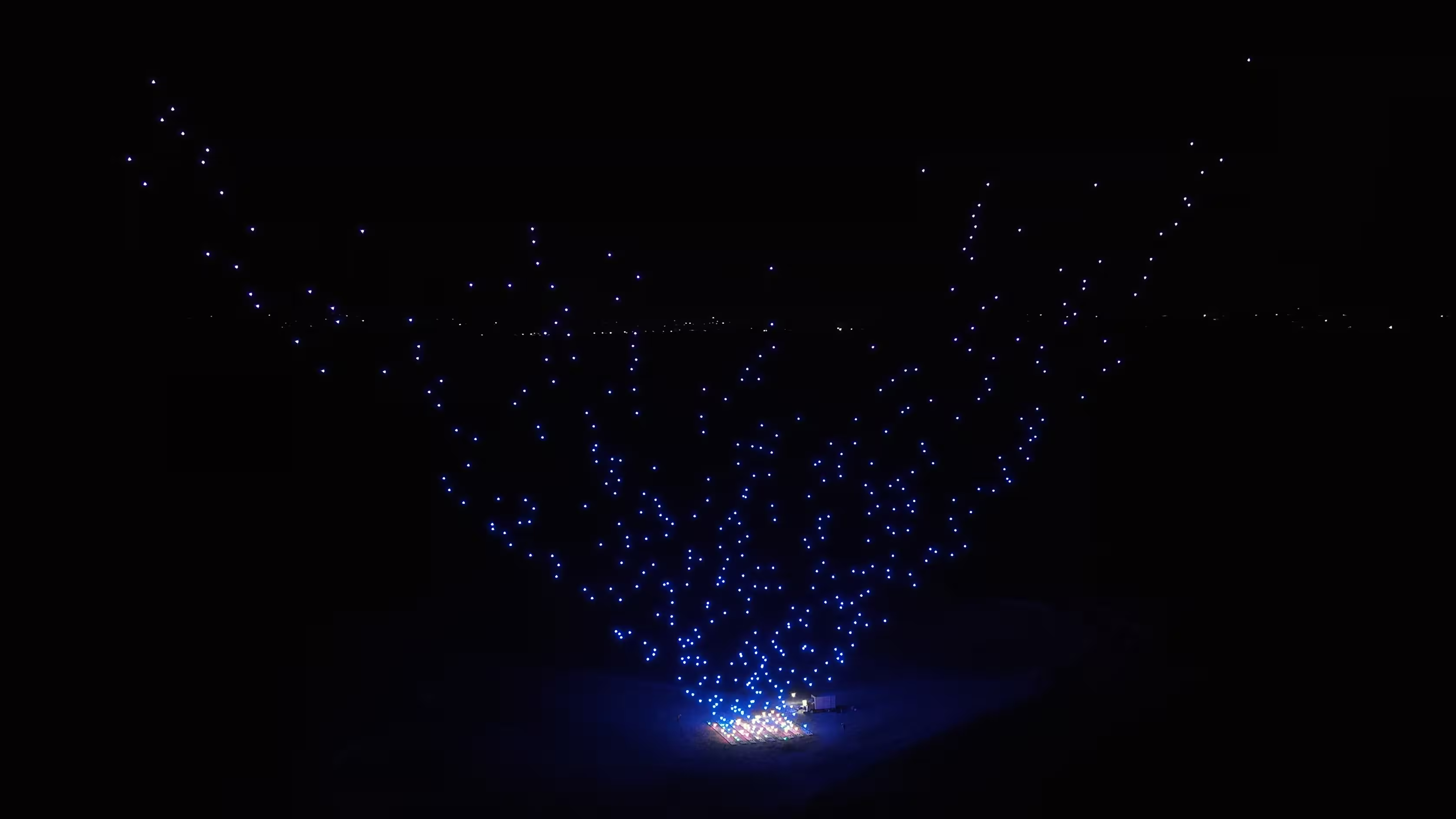Executive summary
The commercial UAV landscape in 2024–2025 is changing rapidly. Demand for industrial-grade drones that can carry heavier payloads, fly farther, endure adverse environments, and act as mobile communications nodes is accelerating across sectors — from power, rail and oil & gas inspection to medical delivery, disaster response, and maritime operations. Recent news and industry reports show growing deployments of drone relay systems, expanding medical delivery pilots, and increased interest in heavy-lift and VTOL hybrid platforms for resilient, on-demand services. These trends create a clear market opportunity for a purpose-built, heavy-lift VTOL like the MMC M11.

The MMC M11 — an all-electric composite VTOL fixed-wing UAV with a twin-boom tail, tool-free rapid assembly, up to 15 kg payload and up to 150 minutes endurance — matches several fast-growing operational needs:
- long-endurance inspections and mapping across wide infrastructure corridors;
- airborne communications relay and temporary network provisioning in disasters or underserved areas;
- point-to-point logistics (medical payloads, spare parts) where ground access is limited;
- persistent situational awareness in wildfire and emergency response operations; and
- maritime and shipborne logistics/ISR when runway independence and payload capacity matter.
This article analyzes recent news and market signals, then maps MMC M11 capabilities to high-value commercial missions, addressing operational considerations, deployment concepts, and business models.
1. Why 2024–2025 is a turning point for heavy-lift and VTOL commercial UAVs
Three converging dynamics are reshaping demand.
1) Real-world pilots and public disasters are proving the value of drones as infrastructure and relief multipliers. Governments, research institutions and companies are increasingly testing drones as airborne communication relays and persistent observation platforms in wildfire, disaster response and remote-health pilots. NASA’s wildfire technology tests and other programs have explicitly demonstrated the role of VTOL winged drones as communication relays and situational awareness platforms during wildfire and emergency exercises. These projects highlight how drones can connect ground assets, share flight-safe data, and operate as relay nodes when terrestrial networks are compromised. (NASA)
2) Medical and logistics BVLOS (beyond-visual-line-of-sight) operations are scaling. Recent pilots in Africa and Madagascar, and broader industry coverage, show AI-driven flight planning, secure long-range links, and lifecycle management enabling medical and small-cargo delivery at commercial scale. These initiatives prove that longer range, higher-payload VTOLs unlock medically critical missions. (DRONELIFE)
3) Market forecasts and investment are accelerating toward communication relay and heavy-lift segments. Market research shows the communications-relay drone market is projected to grow at a double-digit CAGR. Industry commentary and feature analyses suggest heavy-lift and VTOL hybrids will be a major growth segment through 2025 as regulations and infrastructure mature. (lucintel.com)
Taken together, these signals show demand shifting from lightweight, short-range platforms to robust VTOL hybrids capable of carrying heavier, mission-critical payloads for sustained periods and serving as airborne infrastructure.
2. High-value commercial application areas (mapped to MMC M11 capabilities)
Below are mission areas where demand is strongest, with real-world events or research that aid understanding. For each, I describe the operational challenge, why MMC M11 fits, and practical deployment concepts.
A. Communications relay & temporary network provisioning
Operational challenge. In disasters, crowded events, or remote regions, ground networks are often degraded or absent. Emergency teams, telecom operators, and military/civil authorities need temporary, mobile communications nodes to restore connectivity or extend coverage over tens of kilometers.
Recent evidence & market trend. Communication-relay drones have become a mainstream focus; the communication relay drone market is forecast to grow rapidly over the next decade. Research pilots and demonstrations (including by NASA and other programs) show winged VTOLs acting as relay nodes to connect ground units and give situational awareness when terrestrial networks fail. (lucintel.com)
Why MMC M11 fits.
- Payload (up to 15 kg): accommodates high-performance relay radio/packet forwarding hardware, 4G/5G edge units, or point-to-point microwave/mesh nodes.
- Endurance (up to 150 minutes): enables sustained relay coverage and reduces the need for frequent recovery/relays.
- Long, encrypted datalink (80 km AES128): supports secure, long-range video and telemetry for command & control and backbone traffic.
- VTOL & rapid deployment: enables rapid stand-up at disaster sites or pre-positioning on vehicles/ships without need for runways.
Deployment concept. A telecom operator or emergency responder can dispatch an M11 with a modular relay pod, launch in <3 minutes, establish a relay at several hundred meters altitude to restore connectivity across an impacted valley or town, and maintain the relay for several hours before rotation. For longer missions, a small fleet operating in shifts or using a drone-in-a-box ground station provides persistent service. Recent pilots show the real technical viability and operational utility of such relay nodes. (NASA)
B. Medical & urgent logistics (BVLOS delivery)
Operational challenge. Timely delivery of vaccines, blood products, emergency supplies and small medical equipment to remote clinics or disaster zones can mean the difference between life and death. Roads may be blocked; helicopters are expensive and scarce.
Recent evidence & market trend. Multiple successful pilots in Madagascar and Africa demonstrate AI-driven flight planning, BVLOS routing and resilience for medical drone delivery. Market coverage notes expanding commercial services and partnerships that are scaling medical deliveries beyond proof-of-concept. (DRONELIFE)
Why MMC M11 fits.
- 15 kg payload: accommodates larger or multiple cold-chain packages (vials, blood), life-saving gear, or combined supply kits.
- Long range and endurance: supports point-to-point missions up to tens of kilometers or multi-waypoint logistics corridors without frequent recharges.
- Rapid tool-free assembly & VTOL: quick reaction capability for emergency logistics; can operate from improvised sites.
- Secure communications & AES128: protects chain-of-custody telemetry and sensitive medical data.
Deployment concept. Health ministries or logistics providers can create a network of M11 hubs (depot + launch vehicle) to provide scheduled and on-demand Rx/biomaterial delivery across rural clinics. AI flight planning and BVLOS approvals used in recent pilots allow optimized routes that respect terrain and weather, while longer endurance means fewer recharges and higher utilization. (DRONELIFE)
C. Infrastructure inspection and industrial monitoring
Operational challenge. Power lines, wind farms, solar arrays, rail corridors, and pipelines form long linear assets. Inspecting them with humans or short-endurance multirotors is time consuming, costly and sometimes dangerous.
Why MMC M11 fits.
- Endurance & cruise speed (25 m/s): cover hundreds of kilometers per sortie, enabling corridor inspections with minimal repositioning.
- Payload flexibility (EO/IR, LiDAR, multispectral): supports high-resolution thermal, LiDAR mapping and photogrammetry payloads.
- High-altitude capability (operational ceiling up to 4,500 m) and robust météo tolerance: allows inspections in mountains and diverse climates.
- Rapid deployment & modular mounts: reduce field setup complexity and downtime.
Deployment concept. Utilities and inspection firms can pair M11 with mission-planning and AI analytics to program automated inspection routes across transmission corridors, detect anomalies (hot spots, vegetation encroachment), and rapidly dispatch repair crews when a fault is identified — reducing MTTR and safety risk.
Industry commentary and heavy-lift trends highlight increasing uptake of VTOL winged UAVs for mapping and LiDAR because they balance endurance, stability and payload capacity better than short-endurance multirotors. (Unmanned Systems Technology)
D. Wildfire & emergency incident management
Operational challenge. Wildfires and large incidents require continuous situational awareness, rapid reconnaissance, mapping of hot spots, and resilient communications across crews in the field.
Recent evidence & market trend. Firefighting agencies and research programs (e.g., NASA tests and recent wildfire reports) are piloting VTOL drones that provide persistent mapping, thermal scanning and on-scene comms relay to support incident commanders. These pilots expose both the promise and operational challenges of drone use in wildfire suppression. (DRONELIFE)
Why MMC M11 fits.
- Thermal + multispectral payload capacity: for hotspot detection and mapping.
- Long endurance: maintain persistent overwatch for hours rather than minutes.
- Secure long-range comms: provide command & control and video links to dispersed crews.
- Autonomy & obstacle avoidance: safer operations near smoke and variable visibility.
Deployment concept. During an active wildfire, M11s equipped with thermal imaging and relay payloads can form a layered aerial sensor network: high-altitude M11s for wide area mapping and comms, and smaller platforms for close-in mapping — enabling faster firefighter decisions and safer tactics. NASA’s work combining drone relay tech with PAMS units demonstrates how drones can plug critical comms gaps in fire response. (DRONELIFE)
E. Maritime & shipborne logistics and ISR
Operational challenge. Ships at sea often need cargo, medical evacuation items, or extended ISR capability beyond line-of-sight. Helicopter support is costly; shipboard UAVs are a force multiplier.
Why MMC M11 fits.
- VTOL operation + heavy payload: allows shipboard launch/recovery without a runway and carries meaningful payloads for resupply or ISR.
- Durability in maritime environments (IP54, -20°C to +60°C): designed for harsh salt and temperature ranges.
- Long range & endurance: increases ship’s reconnaissance radius and enables long-range comms relay to other vessels or shore nodes.
Deployment concept. Coast guards, offshore service companies and navies can field MMC M11s from small deck space using ship-adapted launch/recovery procedures and containerized transport. The M11’s payload capacity supports high-resolution electro-optic and SAR/MTI sensors or logistic kits for remote platforms.
3. Mapping MMC M11 specs to operational KPIs
Operators and procurement teams evaluate UAVs against measurable KPIs: area covered per sortie, payload throughput per day, mission availability, operational cost per km, and mission failure tolerance. Here’s how M11 aligns:
- Area / distance per sortie: 150 min endurance at cruise ~25 m/s means large coverage footprints (hundreds of kilometers mapped in a single sortie).
- Payload throughput: 15 kg payload opens multi-task missions (sensor + relay + emergency kit), increasing ROI per sortie.
- Uptime & turnaround: tool-free assembly, quick battery swaps and modular payloads support rapid sorties and higher utilization rates.
- Safety & compliance: AES128 datalink, obstacle avoidance and IP54 provide baseline requirements for many commercial BVLOS approvals.
These metrics are strong arguments for industrial programs where single-asset productivity matters: fewer sorties, fewer takeoffs/landings, lower per-hour cost relative to short-endurance multirotors or manned helicopters.
4. Operational considerations & best practices
To realize business value operators must plan beyond platform capability. Below are recommendations and practical points.
Regulatory & approvals
Commercial BVLOS and beyond-aerodrome operations require regulatory authorization in most jurisdictions. Operators should design mission profiles compatible with local rules and partner with authorized remote-pilot operators or managed service providers. Recent pilots that scaled medical deliveries depended on careful regulatory coordination and AI-based flight planning. (DRONELIFE)
Fleet sizing & rotation
For continuous services (relay, logistics corridors, persistent ISR), an operator should provision multiple M11s with overlapping endurance: one airborne, one charging/standby, one in maintenance. This solves battery cooldowns, maintainability and mission continuity.
Ground infrastructure
Mobile vans, containerized drone-in-a-box stations, or shipboard cradles extend the M11’s operational envelope. New autonomous launch/recovery systems demonstrated at trade events and industry shows indicate how containerized solutions can automate rotations and reduce manpower needs. (Defense Advancement)
Safety & airspace integration
Obstacle avoidance, redundancy, and secure comms are essential. Integrating ADS-B or UTM services, airspace flight-plan sharing and deconfliction with manned traffic reduce risk. NASA experiments and industry pilots emphasize the need for collision-avoidance and networked airspace tools when multiple drones operate near manned aircraft or across fire domains. (NASA)
Environmental resilience
Plan for battery performance in temperature extremes and corrosion protection in maritime zones. M11’s operational envelope (-20°C~+60°C, IP54) helps, but operators must implement battery health monitoring and mission-specific preflight checks.
5. Business models & revenue streams
Operators can pursue several commercial models with MMC M11:
A. Services model (UAV-as-a-Service)
Companies offer inspection, mapping, relay or logistics on a per-mission or subscription basis. Customers pay per km surveyed, per relay-hour, or per delivered payload.
B. Public-private partnership
Work with public agencies (disaster response, health ministries, utilities) to provide on-demand BVLOS services, funded via service contracts or grants. Recent medical delivery pilots combine private operators with public procurement to scale.
C. Managed fleet for enterprise
Enterprises with recurrent needs (mining, oil & gas, large utilities) buy fleets or contract managed deployments that supply a turnkey service (hardware, pilots, data analytics).
D. Hybrid models
Combine product sales, training/maintenance packages, and managed service tiers to lower entry costs for customers while providing recurring revenue.
6. Case studies & supporting news (examples and references)
Below are representative real-world developments supporting the M11 use cases:
- Medical delivery scaling in remote regions: Partnerships expanding medical drone deliveries in Madagascar demonstrate the commercial viability and societal impact of BVLOS, long-endurance drone logistics. These pilots rely on AI flight planning and robust platforms to succeed. (DRONELIFE)
- Communication relay & wildfire testing: NASA’s tests and wildfire technology pilots show winged VTOL drones functioning as communications relays and persistent ISR assets during fire response exercises — validating relay use and multi-aircraft coordination. (DRONELIFE)
- Market momentum for relay & heavy-lift: Market research and industry features forecast robust growth in the communication relay segment and heavy-lift drone adoption, aligning with increasing investments and product development in 2024–2025. (lucintel.com)
- Operational considerations reported in industry press: Publications discussing the future of heavy-lift drones and early deployments highlight both promise and regulatory/operational friction points (airspace integration, persistence, and cost models). These are the operational realities M11 is designed to address. (Aero Systems West)
7. Risk factors and mitigation
A responsible commercial plan must consider risks:
Regulatory delay. BVLOS approvals, spectrum allocation for long-range datalinks and airspace access can be slow. Mitigation: engage regulators early, use proven UTM and detect-and-avoid technologies, and partner with authorized operators.
Operational safety. Heavy payloads increase risk in case of failure near people or assets. Mitigation: conservative flight envelopes over populated areas, redundant sensors/IMUs, safe-landing behaviors, and insurance coverage.
Communications jamming/interference. Long range comms can be disrupted. Mitigation: encrypted datalinks, frequency diversity, and fallback autonomous RTL behaviors.
Environmental extremes. Batteries degrade and sensors can fail in dust, salt or extreme temps. Mitigation: preflight checks, battery thermal management, IP-rated payload housings, and maintenance programs.
News about drone threats and airspace incidents also highlights the geopolitical and safety environment that operators must factor into mission planning. Civil and defense authorities are increasingly deploying anti-drone systems and hardening sensitive sites — operators must coordinate with authorities to avoid interfering with critical installations. (Le Monde.fr)
8. Operational deployment example: a day in the life of an M11 logistics hub
To make the value proposition concrete, imagine a regional health program using M11s from a mobile hub:
- 0500 — Preflight and battery check for two M11s at rural distribution hub. One M11 fitted with a modular cold-chain payload, the other fitted with a comms relay pod.
- 0600 — M11-A launches, climbs to 300 m, cruises 60 km delivering vaccines to a rural clinic; M11-B ascends to 600 m to provide comms coverage to local field teams during and after the delivery.
- 0800 — AI flight plan reroutes M11-A to pick up lab samples for return; AES128 video confirms rendezvous and handoff.
- 1000 — Crew swaps batteries and payloads; M11-A is refitted for an infrastructure inspection flight to scan 40 km of transmission line.
- 1100 — M11-B transitions to a scheduled relay role between two remote health teams until ground comms are restored.
This rotation shows how endurance, payload flexibility, and rapid reconfiguration translate to higher daily utilization and mission versatility.
9. Go-to-market considerations
Target verticals. Start with high-value, repeatable commercial customers: utilities, pipeline operators, major agricultural aggregators, healthcare NGOs, and port/coastal authorities.
Sales & delivery model. Offer a blended package: platform sale + optional managed service for initial operations (training, regulatory support, data analysis). This lowers barrier to adoption while building recurring revenue.
Partnerships. Collaborate with telecoms for relay payloads, with logistics partners for distribution networks, and with research institutions for AI analytics and regulatory pilots.
Pilots & certification. Run targeted pilot projects that demonstrate clear ROI (reduced inspection downtime, faster delivery times, restored comms during test events). Use pilot data to accelerate regulatory approvals and customer procurement.
10. Conclusion
The latest news and industry signals in 2024–2025 show a clear and accelerating market need for robust, long-endurance VTOL platforms that can carry meaningful payloads, operate beyond visual line of sight, and serve as airborne infrastructure. The MMC M11 — with its 15 kg payload, up to 150 minutes endurance, tool-free rapid assembly, twin-boom stability and secure long-range communications — is well positioned to capture high-value commercial missions in communications relay, medical logistics, infrastructure inspection, wildfire response, maritime ISR and beyond.
Operators that pair MMC M11 platforms with resilient operational concepts (fleet rotation, containerized launch/recovery, AI-enabled mission planning) can deliver new services, reduce operational cost per mission, and provide rapid, life-saving responses in austere environments.
Selected recent references used in this analysis: market & pilots (medical delivery, relay and wildfire tests), heavy-lift trends, and industry reporting. For convenience, key sources are cited inline throughout the article and listed below.
Selected sources and further reading
- AI-driven flight planning boosts medical drone deliveries in remote Africa; AerialMetric / Shearwater expansion in Madagascar (medical delivery pilots). (airmedandrescue.com)
- NASA wildfire and PAMS tests demonstrating drones as communications relays and wildfire response tools. (NASA)
- Communication relay drone market growth and forecasts. (lucintel.com)
- Industry features on heavy-lift drone trends and regulation in 2025. (Unmanned Systems Technology)
- Commercial UAV news and analyses on drones in firefighting and emergency response. (Commercial UAV News)
- Survey reporting industry expectations on logistics/delivery disruption by drones (market sentiment). (The Drone Girl)
- Examples of drone swarm emergency comms and multi-drone relay approaches in recent technical writeups. (Winssolutions)
- Reports on drone-in-a-box autonomous launch/recovery systems and containerized deployment. (Defense Advancement)




